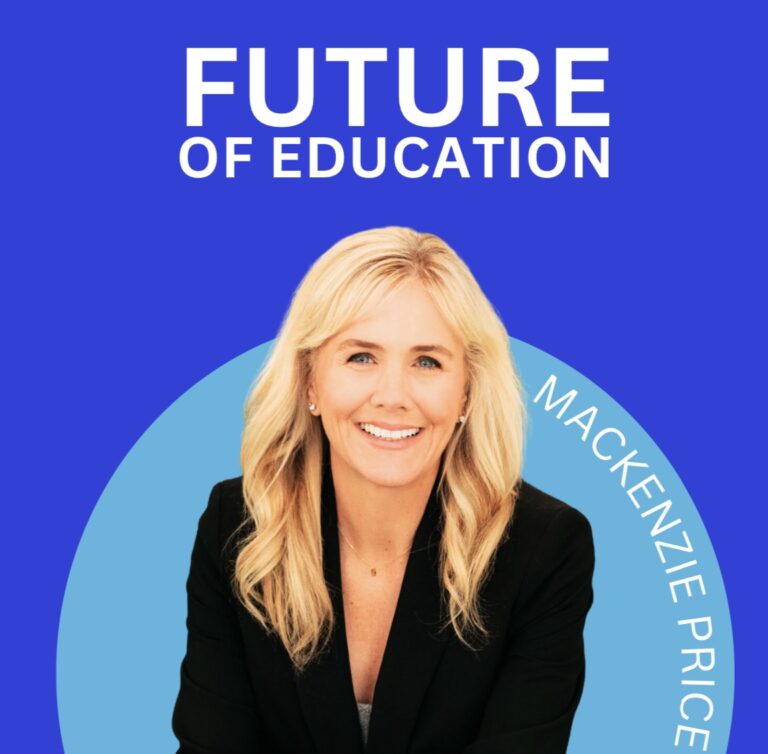Improving school curriculum with AI
- Part 1 Improving school curriculum with AI
- Part 2Using AI to create positive classroom impact
Show Notes
-
01:29The origin and purpose of BrainlyBrainly was founded over a decade ago, inspired by in-person study groups in Poland, to recreate the collaborative study group experience online. Since then, it has grown into a global platform with over 350 million users, facilitating homework assistance and peer collaboration.
-
02:33Brainly's AI powered personalizationBrainly's platform uniquely leverages AI, focusing on understanding why a student asks a question rather than just providing answers. Brainly addresses root causes and personalizes assistance for better learning outcomes by considering each learner's unique needs.
-
06:02Using Brainly for homework assistanceParents and kids can access Brainly via the website or app, where they can immediately start using it anonymously without registering. Brainly is intended for students aged 13 and older to ask questions and receive assistance with their homework tasks.
-
06:37Personalized homework assistance with Brainly's AIWith Brainly's mobile app, a student tackling Algebra II can snap a picture of a challenging equation and submit it for assistance. Brainly's AI analyzes the question, learning from the users interactions and leveraging the history of similar students for more complete responses.
-
08:58Attitudes towards AI in learningSome critics believe the struggle and hunt to access information is integral to learning. However, Brainly challenges this notion, emphasizing that access to information is a fundamental aspect of learning.
-
11:08Building critical thinking skillsBrainly acknowledges the need to teach students how to use the information they access to develop critical thinking skills. They believe their focus on understanding the "why" behind a question helps students make those connections.
-
12:03How learners engage with the Brainly platformWhile some users will delve deeper into certain subjects based on interest, others move on after getting the initial answer. The platform accommodates this diversity by offering the answers upfront, followed by detailed explanations, catering to individual learning styles and interests.
-
14:09School acceptance of BrainlyBrainly receives mixed reactions from schools, with some teachers appreciating its value and outreach from schools interested in integrating it into classrooms. While Brainly wasn't initially designed for classroom use, theyre developing a product specifically tailored for classroom integration.
Quotes
-
"What we're doing with AI is trying to figure out, how can we answer this question best for this particular learners' need?" - Bill Salak
-
"What we found in our research is that the best teachers will try to understand why a student's asking a question." - Bill Salak
-
"The process of learning is taking something you don't know and connecting it to something you do know so that your mental model or your map of the information improves." - Bill Salak
-
"Access to information is a prerequisite to learning." - Bill Salak
- Part 1 Improving school curriculum with AI
- Part 2Using AI to create positive classroom impact
Up Next:
-
Part 1Improving school curriculum with AI
Bill Salak, CTO at Brainly, explores AI in education. The role of technology in facilitating student learning is a topic of ongoing debate. One such point of contention is the use of AI tools to assist students with homework. While some see AI as a valuable resource for clarification and practice, others express concerns about potential drawbacks. Today, Bill discusses whether we should let kids use AI in their homework.
-
Part 2Using AI to create positive classroom impact
CTO at Brainly, Bill Salak, delves into AI in education. While some concerns exist about the use of AI in education, its growing presence in the workforce and everyday life requires a shift. Equipping students with the skills to navigate AI responsibly and effectively is crucial, and it starts with integrating AI literacy into the curriculum, teaching students to use AI safely and responsibly. Today, Bill discusses what AI in the classroom can and should look like.
Play Podcast




